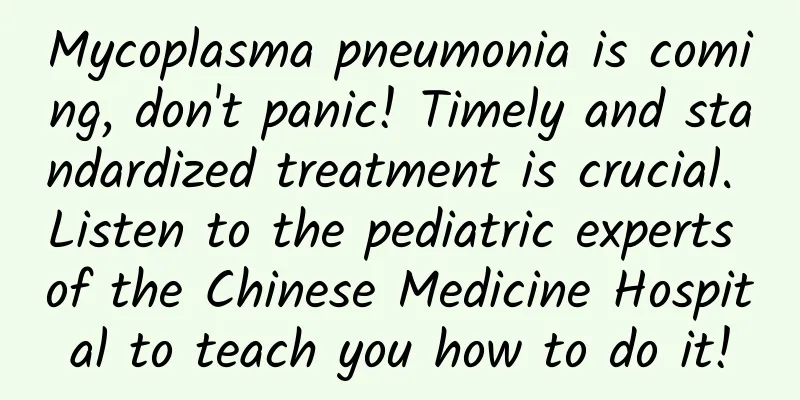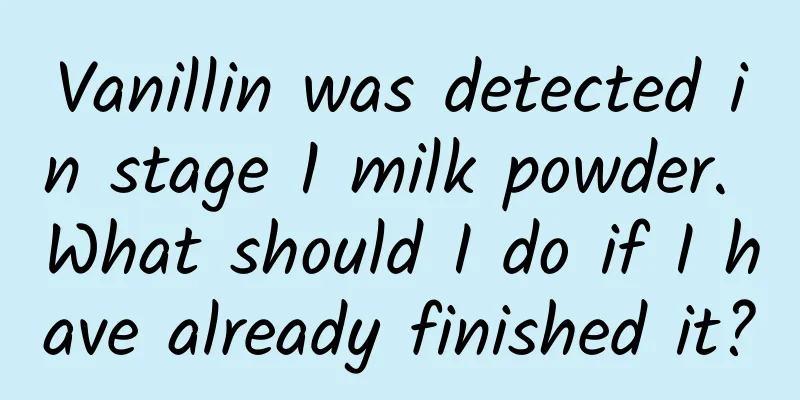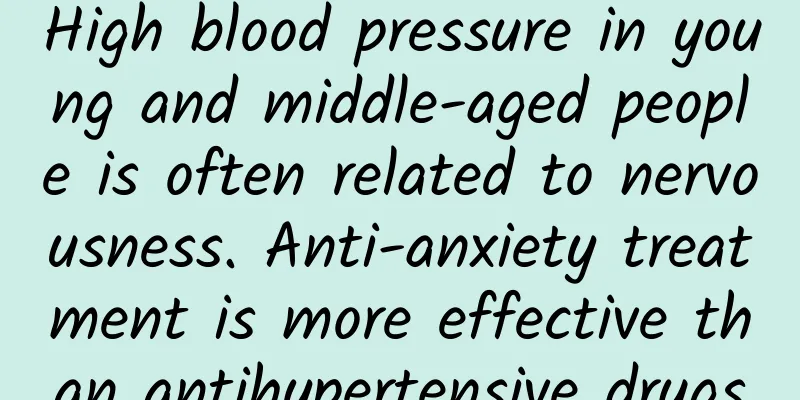Mycoplasma pneumonia is coming, don't panic! Timely and standardized treatment is crucial. Listen to the pediatric experts of the Chinese Medicine Hospital to teach you how to do it!

|
Recently, "Mycoplasma pneumonia" has frequently been on the hot search, and the number of infections across the country has continued to rise. Mycoplasma pneumonia mainly targets children, which makes many parents very worried. In July this year, children were admitted to the hospital for treatment due to Mycoplasma pneumonia. After the National Day holiday in October, children stayed in crowded areas for a long time and were prone to cross-infection. This month, the pediatric department of Chongqing Fuling District Traditional Chinese Medicine Hospital has received more than 100 children with Mycoplasma pneumonia, of which more than 50 needed to be hospitalized for treatment. So, what should we do when children are suffering from mycoplasma pneumonia? Zhang Guangming answered the questions that everyone was concerned about one by one. 1. What is Mycoplasma pneumonia? Mycoplasma pneumonia is neither a bacterium nor a virus. Its size is somewhere in between the two, with a diameter of 2 to 5 microns and a volume less than 5% of the average volume of bacteria. It has no cell wall structure, like a bacterium without a "coat". Because it has no "coat", antibiotics such as penicillin and cephalosporin that are very familiar to everyone in daily life and that inhibit cell wall synthesis are ineffective in treating mycoplasma infection. Mycoplasma pneumonia can affect the bronchi, bronchioles, alveoli and lung interstitium, and is the most common community-acquired pneumonia in children aged 5 years and above in my country. 2. How to distinguish Mycoplasma pneumonia from the common cold? The main clinical manifestations of mycoplasma pneumonia are high fever (mainly moderate to high fever, and persistent high fever indicates a serious condition) and cough (more severe, which may be similar to whooping cough). The fever is not easy to reduce and is easy to recur, and the effect of antipyretics is not ideal. It may be accompanied by symptoms such as headache, runny nose, sore throat, and earache. Some children have wheezing, which is more common in infants and young children. A few children develop into critical illness. The common cold is mainly characterized by nasal congestion, runny nose, and cough. Children are in good spirits, fever is not easy to recur, and there are few complications. "If you can't judge, you can go to the pediatric department of the hospital for serum antibody tests, chest DR and CT examinations. The doctor will make a comprehensive judgment based on the epidemiological history." Zhang Guangming said. 3. Will Mycoplasma pneumonia cause “white lung”? Generally, severe mycoplasma pneumonia will show up as "white lung" in imaging, but it is different from the "white lung" of diffuse lesions in both lungs. Through symptomatic antibiotics and comprehensive treatment combining traditional Chinese and Western medicine, it can be cured in a short period of time, and most mycoplasma pneumonia will not cause life-threatening conditions. If the child is seriously ill and refractory to mycoplasma pneumonia infection, he or she may have residual lung structure or function damage, and long-term follow-up is required. 4. What treatments can be used for mycoplasma pneumonia in children? Mild patients can be treated by observation at home, and can take azithromycin orally. The child should take 8-10 mg per kilogram, orally once a day, and stop for 4 days after taking it for 3 days. This is a course of treatment, and generally 2 courses of treatment are given. If the dry cough obviously affects the rest, common cough and expectorant drugs can be used as appropriate. If the cough is severe and the high fever persists, hospitalization is required. "For such children, the Chinese medicine hospital uses a combination of Chinese and Western medicine, which can be used for nebulization treatment, intravenous infusion, pediatric massage, acupoint application and Chinese medicine treatment. Generally, the best treatment window is 5-10 days after the fever, and the treatment cycle is 7-10 days." Zhang Guangming said. Pediatric Massage Acupoint application 5. How to use medication correctly for home treatment? When treating at home, it is necessary to observe the degree of fever of the child, the effect of the antipyretic, and the child's mental and appetite state. When taking the medicine, it is necessary to strictly follow the dosage in the instructions, pay attention to whether the child has other underlying diseases, and understand the contraindications of the drug. "Remember, you cannot use excessive medication just because the child is in a more serious condition at home. Excessive medication may damage the liver and kidney function of the child. If shortness of breath or mental depression occurs, it is recommended to come to the hospital for treatment in time." Zhang Guangming reminded. 6. This time the patients are mainly children, so does that mean adults don’t need to pay attention? For adults, their immunity is stronger and they generally do not have symptoms, but if their resistance is insufficient, they may also be infected. Especially for some elderly patients with underlying diseases, such as those with diabetes, hypertension, and chronic respiratory diseases, they may develop severe pneumonia after being infected with mycoplasma or chlamydia. If you are infected with mycoplasma pneumonia, please seek medical attention in time. 7. How to prevent and control it in daily life? To prevent mycoplasma pneumonia, the most important way is to develop good personal hygiene habits, try to avoid going to crowded and poorly ventilated public places, and wear a mask when necessary. Cover your mouth and nose with a tissue when coughing or sneezing, and pay attention to hand hygiene and disinfection. Keep your hands clean, exercise more, keep warm, and improve your immunity. As the main gathering place for susceptible people, important places such as schools, kindergartens, and nursing homes should also pay more attention to ventilation and disinfection, and strengthen health monitoring to avoid collective infection. Source: Chongqing Fuling District Chinese Medicine Association Audit expert: Yang Minggao Statement: Except for original content and special notes, some pictures are from the Internet. They are not for commercial purposes and are only used as popular science materials. The copyright belongs to the original authors. If there is any infringement, please contact us to delete them. |
<<: Why do we need to do bilateral kidney ECT after completing the renal function test?
Recommend
Breast cancer bone metastasis Lumbar disc herniation
Due to the unhealthy living habits of women today...
Common diseases in autumn and winter: COPD
Common diseases in autumn and winter: COPD ----Ko...
How to guide breastfeeding?
Many women may breastfeed after giving birth. Thi...
How much does a guide at the Forbidden City in Beijing cost? How can I make an appointment for a guide at the Forbidden City in Beijing? How much does it cost?
The Forbidden City in Beijing, also known as the ...
What is the pedal under the piano for? When should the piano pedal be pressed?
I believe many people have seen a piano. Even if ...
Can I use cupping during menstruation?
In daily life, some people will want to cupping w...
Why is there a hard lump on the cervix? Let you know the truth
Some women have a lump on their cervix, and the l...
Women should remember the ten commandments for health preservation in summer
Even in the hot summer, you still need to take go...
Is non-gonococcal urethritis serious and how to treat it
Urethritis is a disease that affects a wide range...
If my period comes on the 15th, what is the ovulation date?
The ovulation period is something that women atta...
Why is menstrual cramps worse at night?
In the case of menstrual pain, because the sympat...
How many days does it take for a female test tube transplant to implant?
In vitro fertilization is currently a very mature...
What are the benefits of women's foot bath
Nowadays, the status of women in both family and ...
What are the advantages of hyaluronic acid rhinoplasty
As people's pursuit of beauty continues to im...









